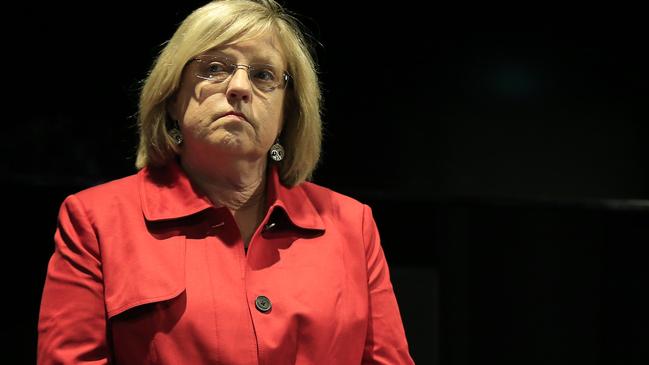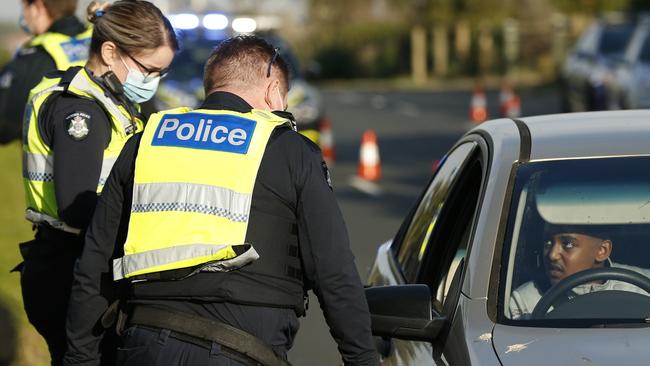State of emergency vs state of disaster: What’s the difference?
It’s only the second time a state of disaster has been declared in Victoria. It means huge, almost draconian, new powers.
Victoria was already in a state of emergency, now due to its stubbornly high COVID-19 infection rate, it’s in a state of disaster too.
But what do both these states mean and what new powers are conferred on authorities?
Yesterday, Victorian Premier Daniel Andrews announced that Melbourne would be headed into stage four coronavirus restrictions that night. This heavily restricts Melburnians’ movements outside their home and imposes a nightly curfe w for six weeks.
Mr Andrews also announced the new state of disaster.
“This means that police and others have additional powers” he explained.
“We can suspend various acts of the parliament and make sure that we get the job done and there’s no question about the enforceability and the way in which new rules will operate.”
It all sounds pretty draconian. That’s because it is.
RELATED: Follow our live coronavirus coverage

Some have suggested the state of disaster is unprecedented. That’s not the case, at least not in 2020.
This is actually the second state of disaster declared in Victoria this year.
The first was in January to deal with the threat of encroaching bushfires. However, this was only declared in certain areas, not state wide.
But let’s go back to the state of emergency first. What this is and what it does.
WHAT IS A STATE OF EMERGENCY?
The current state of emergency isn’t new. Indeed, it’s been in place since March 16.
That declaration was made under the Public Health and Wellbeing Act of 2008.
It’s mainly concerned with health matters and gives the state’s chief health officer (CHO), Brett Sutton, a range of powers.
These include the ability to quarantine people, restrict movement or other declarations to aid overall health.
RELATED: Victoria’s new lockdown rules explained

A state of emergency allows some normal legal requirements to be done away with. So premises can be entered without a warrant should it be deemed necessary for health purposes.
Breach these orders and you can get slapped with a $1652 fine, like the bloke who said he’d travelled from Melbourne to Wodonga on the weekend to get a Big Mac.
States of emergency are initially declared for a month and can be extended – but only for up to six months.
Those six months finish in a few weeks. The Victorian Government may try and find a way to extend the state of emergency. But if is doesn’t, there is now the state of disaster to fall back on.
WHAT IS A STATE OF DISASTER?
A state of disaster is more wide ranging than a state of emergency.
It is allowed under the Emergency Management Act of 1986. It has only been declared twice in Victoria, and both of those times have been this year.
A state of disaster gives a new person far more powers. Whereas the CHO was the big dog in a state of emergency, in a state of disaster it’s Police and Emergency Services Minister Lisa Neville.

RELATED: Extreme new restrictions for industry in Victoria
It’s also not necessarily focused strictly on health matters.
The act says a state of disaster may be declared if the Premier considers a situation, “is likely to constitute a significant and widespread danger to life or property in Victoria”.
Examples in the act of a “disaster” include an explosion, earthquake, a “wind storm,” hijacking, terrorism, and crucially in this occasion, “a plague, epidemic or contamination”.
“The declaration of a state of disaster gives the Police Minister responsibility for directing and co-ordinating the activities of all government agencies,” University of Sydney Professor of Constitutional Law Anne Twomey wrote in a piece for website The Conversation.
Similar powers contained within the state of emergency are now available to the Police Minister such as controlling movement, stopping mass gatherings – such as protests – and barring entry in and out of the state.

It has been declared for a month initially and can be extended.
“One of the most extreme powers the Minister has is to override legislation,” wrote Prof Twomey.
“Reassuringly, there are strict limits placed on this power. The Minister can only exercise it if they believe compliance by a government agency with the provisions of an Act or instrument that prescribes the agency’s duties or responsibilities, would inhibit its response to the disaster.”
Overall however, the declaration of a state of disaster may be less about the powers conferred and more about the shock at declaring one at all.
“A state of disaster may be effective in reinforcing to the public the absolute necessity of complying with government instructions in the midst of this pandemic,” Prof Twomey wrote.
“The symbolism of the action may therefore be as important as the powers conferred.”

